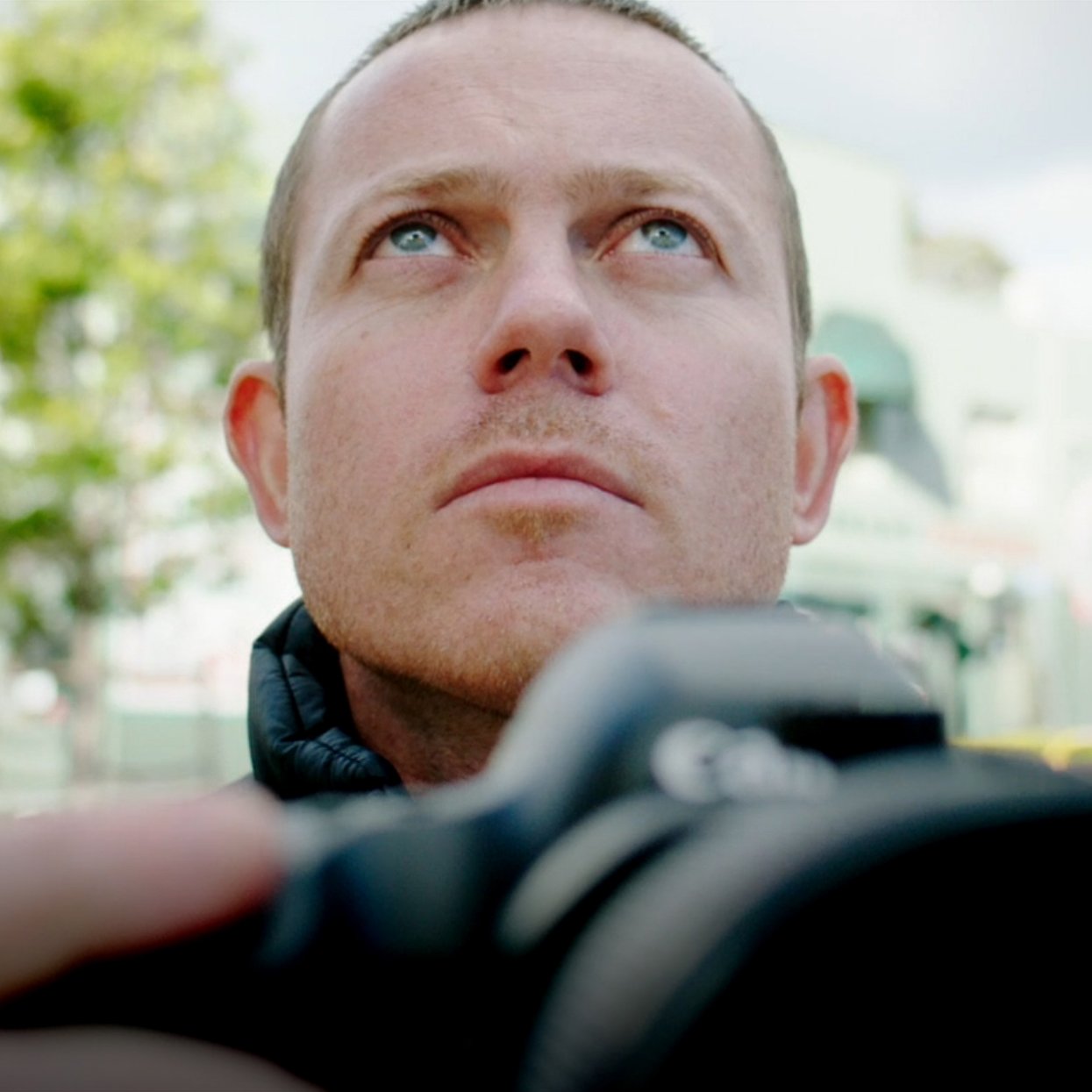Reading time ~15 minutes
I’m not breaking new ground by saying that public speaking is a critical tool of the professional. It is how new and innovative ideas are presented, exchanged and an excellent way to share these ideas with peers, while getting immediate feedback in the process. It also something that terrifies pretty much every single one of us.
The most seasoned public speakers, of the kind who speak for a living are very often adept at giving talks that appear effortless and easy to understand. What people often don’t realize is how much work goes into preparing a high-stakes talk, like you would do for TED. TED is the pinnacle of public speaking, so it makes sense that the people who are asked to talk at these events work really hard at making sure that their talk is the best it can be.
What of lower-stake public presentations? Like a local industry conference or a university? Should you prepare as much for those? Yes, without question, one should prepare as much, if not more for these. I’ve witnessed too many otherwise respected professionals turn a promising talk into a nap-inducing snoozefest. They wax technical, stumble through their disorganized notes or worse, crime of all crimes, read verbatim off of a script. Needless to say that it’s not good for their image or their prospect of being invited again to speak in front of that audience.
Being a poor speaker will limit your chances of being invited to future speaking gigs, while practicing a bit to become a better speaking can have a dramatic upside. It can help you make your next deal, find your next client or graduate to being a paid speaker. This is why you cannot afford to mess up your next talk. I’ve put together a list of things to consider when putting together a talk in order to help you navigate through the process.
If we break down public speaking to its essence, it is nothing more than storytelling. That story might be highly technical, but it is a story nonetheless. I would even argue that the more technical it is, the more you have a duty to make palatable and easy to digest. No one, ever, has been interested in sitting through a two-hour long presentation detailing the engineering of mass-timber structures, described via a series of graphs and diagrams. Not even the most nerdy of structural engineers would make it out of such a talk unscathed. An engaging speaker taking on the same topic would find ways to weave all these data into a storyline that would take the audience on a journey, a fascinating trip into the history of mass timber, why it is making a timely come-back right now and how it’s going to save the environment.
Take a second to think about the best public presentations you’ve ever witnessed. What were the attributes displayed by the speaker? Did they present their ideas in a way that made you understand them right away, as if they understood intuitively how you thought? Did they announce clearly what they were going to talk about and what you could expect to get out of the presentation? Did they present their ideas in such a way that you were able to relate to it on a personal level, being emotionally involved, as it were? Was their presentation tailored to the audience, talk time and topic? Did they give the right amount of information for it to be understood? Was their presentation well put together and feel natural?
Let’s break down the attributes of great talk and see what’s at play here:
1.Announce it loud and clear
The best presentations always start with the spoken equivalent of a table of contents. The speaker starts by announcing what he’s going to talk about, why it is important and what the audience can expect to get out of it. While this may seem obvious, more often than not, it is missing. The reason it is important is because it sets expectations for the audience. They don’t have written material to refer to, so giving them a mental breakdown of the presentation helps them navigate what is being said down the road.
It is also a mark of respect for people’s time as they often don’t know what is being talked about in detail and allows for the few out-of-place laggards who randomly stumbled into the lecture hall to leave if somehow this topic isn’t interesting to them. It’s better to have a few engaged audience members than twice the amount of people with half of them asleep.
By knowing what to expect, they are not distracted trying to figure out what is being presented and therefore can focus on the subject of conversation.
2. Put yourself in their shoes
In order to give an effective talk, one has to cater to their audience. While a given talk topic may be presented many times over, each occurrence should take into account the audience’s specific needs. Empathizing will allow you to gain a deeper understanding of what it of interest to them and therefore enable them to feel more connected to what is being presented, as it appears more personal.
Designers are hopelessly notorious for using archispeak to describe their ideas, with no consideration for who the recipients of these ideas are. The problem with this one-size-fits all approach is that only a very narrow segment of the population is equipped to understand you. Nevermind the fact that using an obfuscating and jargon-laden language makes you sound pompous and instantly chips away at your credibility. Heck, I studied architecture and half the time I don’t understand what architects are blathering about when they are in full archispeak mode. It’s telling that books have to be written on the topic to help people understand. Forget the Archispeak-English dictionary and just use plain english instead.
Real people (a.k.a normal people outside of your industry) want nothing but to be spoken to in a human, authentic and intelligible language. The best litmus test is to try and make your presentation intelligible to your 10 year-old kid or your 90 year-old grandmother. It will force you to distill your ideas down to their essence and in the process not leave anyone behind.
Short of having access to your audience and get direct feedback on your topic of presentation, spending a little time thinking about what these people may want to hear should be enough to give you an insight as to what might be of interest to them. You can infer a way to present your ideas that is likely to make sense to your audience.
With some practice, you’ll be able in no time to adapt your public presentations to each audience and have success every time by giving audience members an easy way to enter the world of your ideas.
3. Appeal to the audience’s emotions
In order to make a point and persuade people that your ideas are the best since sliced bread, it is important to appeal to your audience’s emotional side. As Simon Sinek explained in Start With Why we all have a tendency to describe the benefits of our ideas with rational arguments, facts and figures, but it’s our deep purposeful commitment to a purpose that is the most effective at enrolling people to your cause.
With that in mind, it is imperative to relate your talk to a broader purpose that gives them some context as to where you’re coming from. In other terms, if you very factually and accurately describe your latest building, you run the risk of sounding boring. Conversely, if you describe its genesis and why you designed it the way it is, while relating to how it serves its users the best, you have the potential to build a narrative that will make your building sound much more interesting.
I remember attending a talk by Joshua Prince-Ramus 10+ years ago, while I was studying architecture. It was shortly after he broke away from OMA and renamed his practice REX. He came to my school to give a lecture on his work, but much to my surprise, he ended up talking more about his take on the architectural profession, how he came up with a different business model for his practice.
The way he described in great detail how that business model would impact all the stakeholders, was the most compelling argument as we could now relate to how his work would impact its environment in a positive manner. The projects he talked about were simply the demonstration of that philosophy. Not surprisingly, the REX name means “re-appraisal of architecture”, what a brilliant way to walk the walk.
Bjarke Ingels is known to do the same when talking about his projects. He always starts with the main design challenges that were identified during the analysis phase and then breaks down how his designs solve each of those challenges. Watch him here tell a very brief story of his most innovative projects and explain very plainly and simply why these projects make sense. In every case, the arguments appeal to our emotions, not our rational brains. In these examples, both Ingels and Prince-Ramus show how masterful they are at taking complex ideas into easily understandable concepts that are both appealing and engaging. They put us in the shoes of the users and make us want to be part of whatever it is that they are up to.
I will knock a few points off though, due to their inability to shake off the bad habit of using archispeak. Again, if your 8 year-old nephew cannot understand what you’re talking about, you’ve failed.
4. Just the right amount of detail
You’re given a certain amount of time to present your ideas. Would you just go and present in the way you want to and hope that it fits the format? I hope not, because you’d be running the risk of presenting only half of your ideas, and not necessarily the best half.
A presentation should always be tailored to the time given and the audience in order to ensure that you deliver the right message. I would go as far as saying that each presentation on the same topic always has to be different, not unlike two buildings with similar programmatic requirements would always be different based on the site and its users.
By doing so, you will show your audience that you respect their time and particular needs, which in turn will make them a lot more engaged with your presentation. Having the right amount and kind of detail in your talk is essentially building on principle #1 above and ensuring that it is carried through the whole presentation. It’s perfectly OK, encouraged even, to regularly go back to your verbal table of content when jumping to a new section, as a way to keep your audience on board and make it real easy for them to keep track of where you are in your talk.
Oh and please, please, please, make sure to time your presentation during the rehearsal, until you can nail 100% of the time your target length. Which leads me to the next point:
5. Rehearse, rehearse, rehearse… Then rehearse some more.
I think the most effective presentations are those that look and feel like a natural conversation. It might be a one-sided conversation, but the flow of speech and ideas should feel natural. Well rehearsed, definitely, but I would caution against striving for perfection as it will make you sound like a robot and most people don’t like robots.
There is really no substitute for preparation. The best speakers prepare to death, until they know their material in and out, at which point they can ditch their notes altogether and just present without a safety net. Watch any TED talk to see how it’s done.
The best way to prepare is to work off of a bullet-point-style set of notes, with abbreviated annotations that serve as a reminder of the key points you want to talk about, without getting you stuck with an inflexible script. The reason for that it to prevent any possibility to get lazy and start reading off of your notes. Reading a script is the worst kind of presenting one can ever do and should be avoided at all cost, unless your goal to put your audience to sleep.
With enough preparation, you should know your talk in and out and be able to deliver it on command. You can go as far as ditching the notes altogether if you’re feeling adventurous, but keeping them nearby to act as a loose reminder of what you need to say is perfectly OK and can save your bacon in case of a brainfart. A good sign that you’ve rehearsed enough is when you can give your presentation without looking at your notes. At minimum, you’ll want to rehearse a handful of times to have a good working knowledge of your talk. If this presentation is really important, I would rehearse as much as is humanly possible in the weeks leading up to it, with and without a test audience in order to iron out the kinks.
I would also recommend against just writing out bullet-points and not rehearsing, a.k.a. going freestyle, as if you were to run into a disruptive element, you will not be familiar enough with your material to roll with the punches. Make no mistake, you will be disrupted at one point or another, and having the ability to handle it while getting back into the groove quick, is paramount to keep your presentation flowing and interesting.
You may ask, when do I know I’m ready? Well, a good indication of your preparedness is to be able to deliver your presentation comfortably and confidently while keeping your audience on the edge of their seats. As you do more talks, you’ll be able to fine-tune your preparation and determine how much of it you need to do, as it will vary according to one’s varying degrees of ability. A little apprehension is perfectly normal, and I doubt even the most seasoned public speakers never have a little knot in their stomach before going on stage.
Bonus tip #1:
Breathe. For those of you who practice yoga and meditation, you will naturally understand the benefits of mindful breathing before going on stage. If you know what to do, just set aside some time a few minutes before the big stage to breathe and calm yourself down. If you’ve never breathed intentionally, you can just sit down for a few minutes and breathe deeply and intentionally. This will calm your nerves and help you relax, while boosting your confidence.
You may get a little dizzy if breathe particularly deeply and that’s perfectly normal, it just means that your brain is getting high on oxygen. This will help with the stress and will disappear as soon as you get back to normal breathing.
Bonus tip #2:
Work your voice. A well warmed-up and trained voice will project far more than an untrained one. Preparing for a talk by doing basic vocal warmups is a great preparation. For the more dedicated of you, learning how to sing and use breath to project your voice is a fantastic long-term way to improve your speaking skills. The more casual speaker would also benefit from simple things like singing along in the shower and going to the local karaoke bar with friends. I’m serious.
Bonus tip #3:
Look at your audience in the eyes. There is nothing more unsettling than a speaker who is not engaging visually with the audience. While you don’t want to stare at the same person for 2 minutes, as it would get awkward very quickly, it’s always a good idea to randomly look around the room and make eye contact with a variety of people for a second or two.
A neat trick I’ve learned is to visualize an imaginary triangle pointed down, where each point of the triangle would correspond to an audience member’s face and go back and forth between each of the triangle's points. Do that a couple of times and then imagine another triangle and repeat. The key is to make sure that you cover the entire audience and make eye contact with a large portion of it.
Bonus tip #4:
Use your body. Too many times, I’ve seen people standing behind a lectern and stay there for the whole presentation. This is as much the fault of the organizers as it is that of the speaker. The stage setup is far too often designed to be static and presenters often are not even given a wireless mic that would give them the ability to move about.
That’s a shame because body language is one of the easiest and most overlooked ways to make your talk come to life. It’s OK and highly encouraged to use your hands, move about the stage and exaggerate your gestures. There is no magic trick for this one as everyone moves differently and we all have varying degrees of comfort with being metaphorically naked in front of an audience. There is no doubt, however, that a little movement is better than none. Practice will also help you get better at this.
Conclusion
There is a lot more to it than public speaking that the few distilled ideas I’ve just covered, as this is a fascinating topic that can be discussed for days without ever getting boring. I will say that if you practice and apply what was discussed in this article, you will almost certainly dramatically improve your public speaking skills, and who knows, perhaps unleash the Ken Robinson within you. Good luck and send me a note if you were able to successfully implement some of these ideas!
Arnaud Marthouret is the founder of rvltr and leads their strategy, visual communications and media efforts. He has helped numerous architects and interior designers promote themselves in their best light - pun intended - in order to help them run more effective practices and grow in a meaningful way.
If you have questions about this article or rvltr, or want to chat about your strategy and communications, you can leave a comment, share with a friend, or reach him at arnaud{at}rvltr.studio.



















